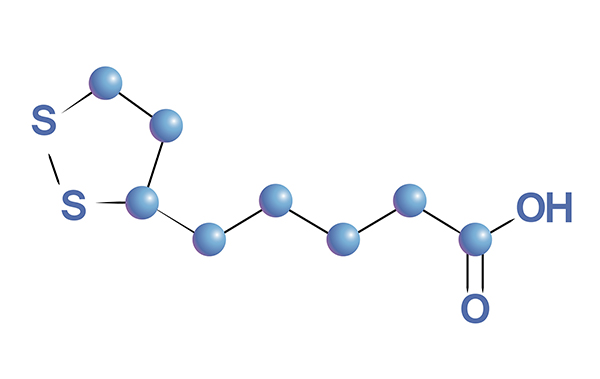Peripheral Neuropathy: Effective Integrative Management
Peripheral neuropathy, typically abbreviated to neuropathy, is a disease of nerves other than the spine or brain. The most common presentation of neuropathy is numbness and/or tingling, typically in the hands and feet. It can be described as the feeling when your hand or foot “goes to sleep,” yet it is typically persistent and ongoing. The severity of neuropathy can vary from annoyance over the sensation to extreme, debilitating pain in its severe forms.[1][2]
The Mayo Clinic lists symptoms commonly associated with neuropathy as follows:[1]
- Gradual onset of numbness, prickling, or tingling in your feet or hands, which can spread upward into your legs and arms
- Sharp, jabbing, throbbing, freezing, or burning pain
- Extreme sensitivity to touch
- Lack of coordination and falling
- Muscle weakness or paralysis if motor nerves are affected
There can be many causes of neuropathy, yet some of the most common are physical trauma, metabolic disease (diabetes), multiple sclerosis, chemotherapy, certain antibiotics, and excessive alcohol consumption.[1][2] In diabetes, chronically elevated blood glucose damages the very small nerves supporting our fingers and toes. The autoimmune destruction of myelin sheaths that characterizes the disease process of multiple sclerosis commonly induces neuropathy. Neuropathy is a common side effect of modern chemotherapeutic medications and some antibiotics.
In our practice, diabetes and multiple sclerosis are common causes of neuropathy of mild to moderate severity, while chemotherapy usually induces a very severe neuropathy that may lead to treatment needing to be discontinued until the neuropathy subsides. Needless to say, effective strategies for relieving neuropathy are very important in a broad array of settings.
Three key options emerge regarding natural health products that can positively impact neuropathy: alpha-lipoic acid (ALA), acetyl-l-carnitine (ALC), and benfotiamine. All three have important human evidence that they help relieve symptoms associated with neuropathy. The most well-researched of the three is alpha-lipoic acid. In our practice, for mild to moderate neuropathy, our first-line treatment is to administer ALA at 150–300 mg, twice per day (300–600 mg per day total). We find this to be an extremely effective strategy, and relief is usually delivered within days of initiating the supplement.
Dr. Jill Shainhouse, ND, pioneered a strategy for the very severe neuropathy that is a common side effect of chemotherapy treatment. She implements a strategy where all three natural health products—alpha-lipoic acid, acetyl-l-carnitine, and benfotiamine—are administered in combination. This combination of natural health products has proven effective for improving/managing severe neuropathy pain in a significant subset of individuals.
 alpha-Lipoic Acid
alpha-Lipoic Acid
A very large number of human studies have reproducibly shown that treatment with alpha-lipoic acid is very effective for peripheral neuropathy. It is typically studied for neuropathy associated with diabetes, yet some studies have also evaluated ALA for neuropathy associated with multiple sclerosis. Most studies administer the ALA via intravenous (IV), yet oral administration likewise delivers a very important impact.
 One meta-analysis combined data from 15 human studies. ALA at 300–600 mg per day (typically administered by IV) proved very effective at managing neuropathy pain among individuals with diabetes. Individuals receiving ALA were 400% more likely to report significant improvement relative to people not receiving ALA.[3]
One meta-analysis combined data from 15 human studies. ALA at 300–600 mg per day (typically administered by IV) proved very effective at managing neuropathy pain among individuals with diabetes. Individuals receiving ALA were 400% more likely to report significant improvement relative to people not receiving ALA.[3]
In another meta-analysis of 13 studies, ALA added to a common prescription for neuropathy was significantly superior to the prescription alone.[4]
Interestingly, ALA not only helps neuropathy in diabetes, but recent evidence has shown it also has important metabolic impact in diabetes itself. A meta-analysis of 24 studies in people with diabetes showed ALA lowered fasting blood glucose, HbA1C, circulating insulin, triglycerides, and LDL-cholesterol.[5]
Acetyl-ʟ-Carnitine
ALC likewise has evidence from human studies of an important role in improving symptoms associated with neuropathy of many causes. The typical dose of ALC is 1000 mg, twice per day (2000 mg per day total). There are many uses of l-carnitine, including but not limited to improving heart function, neurodegenerative disease, and male fertility, as well as enhancing fat metabolism; our focus will remain on neuropathy.
ALC has been shown to improve symptoms of neuropathy in settings of diabetes,[6][7] chemotherapy treatment,[8][9] and sciatic pain caused by disk herniation.[10]
Benfotiamine
Benfotiamine is an S-acyl derivative of thiamine (vitamin B1).[11] It possesses a 3.6-fold increase in bioavailability relative to common thiamine salts, and achieves 5-fold greater blood levels of the vitamin.[12] Dosing of benfotiamine ranges from 150 to 600 mg per day.
Several studies have attempted to evaluate the impact of benfotiamine on neuropathy in various settings, and some of these studies fail to show a significant impact. Nonetheless, we identified four human studies showing significant impact of benfotiamine on neuropathy.[13][14][15][16] While our bias is to prefer to use ALA as the first-line treatment for neuropathy, benfotiamine certainly has a role to play, and combining the natural health products discussed in this article is often required to obtain relief from severe forms of neuropathy.
 Of further interest, alcohol powerfully impairs thiamine absorption, and long-term alcoholism has reproducibly been shown to be accompanied by thiamine deficiency. This deficiency then directly contributes to depression and other mental health challenges among alcohol-dependent individuals. Due to its superior bioavailability over standard thiamine preparations, interest has surfaced in utilizing benfotiamine among alcohol-dependent individuals.
Of further interest, alcohol powerfully impairs thiamine absorption, and long-term alcoholism has reproducibly been shown to be accompanied by thiamine deficiency. This deficiency then directly contributes to depression and other mental health challenges among alcohol-dependent individuals. Due to its superior bioavailability over standard thiamine preparations, interest has surfaced in utilizing benfotiamine among alcohol-dependent individuals.
Among 85 adult men recently attempting to abstain from alcohol, investigators concluded that benfotiamine (600 mg per day) appears to reduce psychiatric distress and may facilitate recovery in severely affected males with a lifetime alcohol use disorder and should be considered for adjuvant therapy in alcohol rehabilitation.[17] In a study of non–treatment seeking, actively drinking men and women,[18] benfotiamine supplementation achieved significant reductions in alcohol intake among women, but not men, over a 24-week treatment period.
Discussion
Neuropathy is a fairly common complaint, with a wide array of potential causes. In its mild form, people find it a nuisance and commonly seek treatment for it. In its severe form, it is capable of delivering debilitating pain. In patients undergoing chemotherapy, this can mean delaying potentially life-saving/extending treatment. In other settings, this can mean living with constant, severe pain. ALA is our first choice for treating neuropathy, often delivering the desired outcome, and does so very quickly for most people. For more severe forms of neuropathy, a combination of ALA, ALC, and benfotiamine should be strongly considered.
References
- Mayo Clinic Staff. Peripheral neuropathy. · https://www.mayoclinic.org/diseases-conditions/peripheral-neuropathy/symptoms-causes/syc-20352061 · Accessed 2019-03-01.
- Wikipedia. Peripheral neuropathy. · https://en.wikipedia.org/wiki/Peripheral_neuropathy · Updated 2019-02-07. · Accessed 2019-03-01.
- Han, T., et al. “A systematic review and meta-analysis of α-lipoic acid in the treatment of diabetic peripheral neuropathy.” European journal of endocrinology, Vol. 167, No. 4 (2012): 465–471.
- Jiang, D.Q., et al. “Fasudil combined with methylcobalamin or lipoic acid can improve the nerve conduction velocity in patients with diabetic peripheral neuropathy: A meta-analysis.” Medicine, Vol. 97, No. 27 (2018): e11390.
- Akbari, M., et al. “The effects of alpha‐lipoic acid supplementation on glucose control and lipid profiles among patients with metabolic diseases: A systematic review and meta‐analysis of randomized controlled trials.” Metabolism, Vol. 87 (2018): 56–69.
- Li, S., et al. “Effects of acetyl-l-carnitine and methylcobalamin for diabetic peripheral neuropathy: A multicenter, randomized, double-blind, controlled trial.” Journal of diabetes investigation, Vol. 7, No. 5 (2016): 777–785.
- Uzun, N., et al. “Peripheric and automatic neuropathy in children with type 1 diabetes mellitus: The effect of l-carnitine treatment on the peripheral and autonomic nervous system.” Electromyography and clinical neurophysiology, Vol. 45, No. 6 (2005): 343–351.
- Campone, M., et al. “A double-blind, randomized phase II study to evaluate the safety and efficacy of acetyl-l-carnitine in the prevention of sagopilone-induced peripheral neuropathy.” The oncologist, Vol. 18, No. 11 (2013): 1190–1191.
- Bianchi, G., et al. “Symptomatic and neurophysiological responses of paclitaxel- or cisplatin-induced neuropathy to oral acetyl-l-carnitine.” European journal of cancer, Vol. 41, No. 12 (2005): 1746–1750.
- Memeo, A., and M. Loiero. “Thioctic acid and acetyl-l-carnitine in the treatment of sciatic pain caused by a herniated disc: A randomized, double-blind, comparative study.” Clinical drug investigation, Vol. 28, No. 8 (2008): 495–500.
- Wikipedia. Benfotiamine. · https://en.wikipedia.org/wiki/Benfotiamine · Updated 2019-01-10. · Accessed 2019-02-28.
- Panel on Food Additives and Nutrient Sources added to Food. “Scientific opinion: Benfotiamine, thiamine monophosphate chloride and thiamine pyrophosphate chloride, as sources of vitamin B1 added for nutritional purposes to food supplements.” EFSA journal. European Food Safety Authority, Vol. 864 (2008): 1–31.
- Nikolić, A., et al. “[The effect of benfothiamine [sic] in the therapy of diabetic polyneuropathy]” [article in Serbian]. Srpski arhiv za celokupno lekarstvo, Vol. 137, No. 11–12 (2009): 594–600.
- Stracke, H., et al. “Benfotiamine in diabetic polyneuropathy (BENDIP): Results of a randomised, double blind, placebo-controlled clinical study.” Experimental and clinical endocrinology & diabetes, Vol. 116, No. 10 (2008): 600–605.
- Haupt, E., H. Ledermann, and W. Köpcke. “Benfotiamine in the treatment of diabetic polyneuropathy—A three-week randomized, controlled pilot study (BEDIP study).” International journal of clinical pharmacology and therapeutics, Vol. 43, No. 2 (2005): 71–77.
- Winkler, G., et al. “Effectiveness of different benfotiamine dosage regimens in the treatment of painful diabetic neuropathy.” Arzneimittel-Forschung, Vol. 49, No. 3 (1999): 220–224.
- Manzardo, A.M., et al. “Change in psychiatric symptomatology after benfotiamine treatment in males is related to lifetime alcoholism severity.” Drug and alcohol dependence, Vol. 152 (2015): 257–263.
- Manzardo, A.M., et al. “Double-blind, randomized placebo-controlled clinical trial of benfotiamine for severe alcohol dependence.” Drug and alcohol dependence, Vol. 133, No. 2 (2013): 562–570.

 Stores
Stores